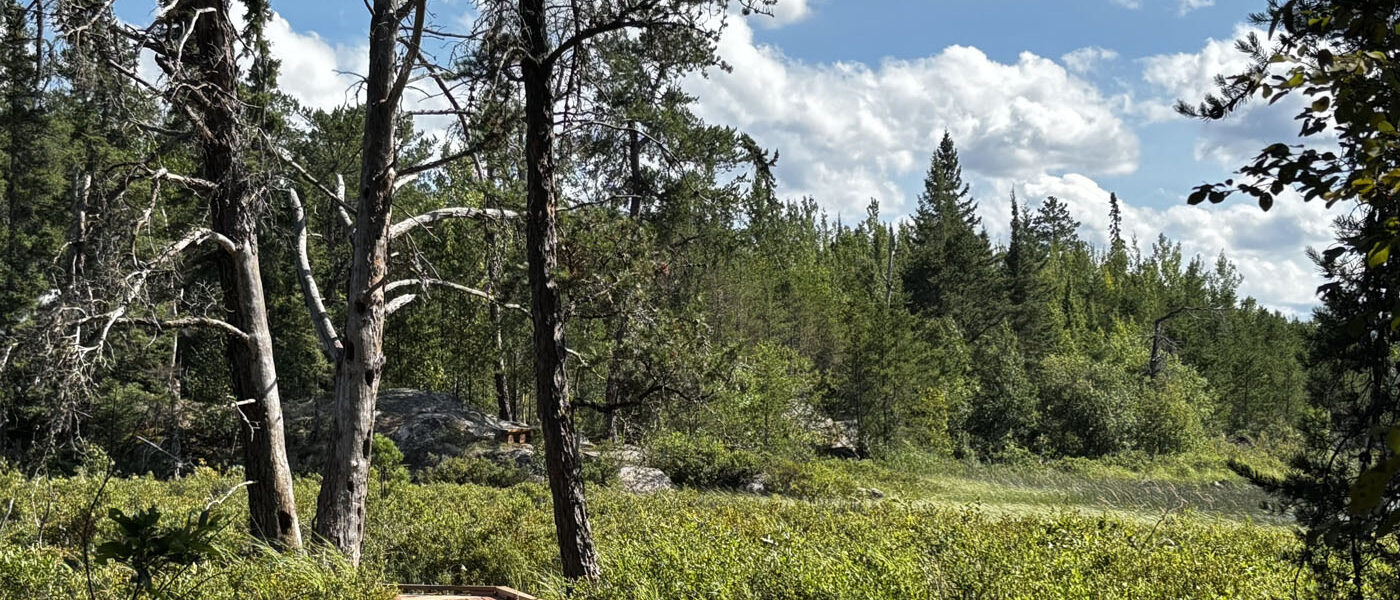Trail Time
The loons have been singing all morning, and though Lars and I started the day with good intentions at our work — Lars pounding his chisel on his latest timber frame and me tapping on my computer — we each had to stop and listen to their echoing chorus. It went on for hours. The loons have seemed much more vocal this year. It makes me wonder if we have several breeding pairs on the lake. Down in the bay, neighbors have photographed a handful of loons rafting, which is common this time of year. Rafting is when groups of loons congregate on a lake. It is thought that they do this for socializing reasons, where they interact, feed and swim in groups. They also do circle-dancing, bill-dipping, and splash-diving with one another. They won’t be migrating until October or so but this behavior points to a fact we’d all rather not face just yet: Summer will end.
We’ve had a bit of chilly weather lately, enough so that warm socks and sweaters have been moved to more handy locations. Yesterday I thought I might have to start a fire in the wood stove, but I put a warm layer on and thought no more about that. Today, the thought of a sweater is laughable and the mosquitoes are out in full force.
A goldfinch is sitting right now on a thistle I neglected to cut down. Isn’t it wonderful that a task I failed to complete has turned out so beautifully? The bird, singing wildly, is an impossible yellow, made even more impossibly beautiful by its juxtaposition with purple thistle and magenta fireweed. Down the hill, a greenish yellow bird — a female goldfinch — sits on a thistle head, systematically taking it apart, pulling with her beak to get to the seeds below, shaking the thistledown off her head and wings and then getting back to work on the seed head. Two other goldfinches keep up a constant chatter nearby. Maybe they’re semi-grown babies and are still looking to be fed. Dream on youngsters. Time to fend for yourselves! I can’t see them, but I see some bright yellow patches among the birch leaves and jack pines that might be yellow birch leaves or goldfinches. I watch and wait. The sky is a blue bowl above us, with puffy clouds moving ever so slowly, riding a faint westerly breeze.
I wonder why so many fall flowers — like thistles — produce this fluffy downy substance. Its scientific name is papas or coma, depending on the flower. Goldfinches, hummingbirds and other species use the down to build their nests. Yellow goatsbeard is the largest of the fluff-makers. This summer I’ve not seen a single yellow goatsbeard in bloom. I walk by them every day and I only see the giant spent heads — like shiny jumbo dandelion puffs, ready for the seeds to be blown away in the breeze. I know they must be blossoming, but they do it in secret.
The natural world has so many secrets. I seek to find the answers to the most local ones. Where are the striped coral orchids? Where are the eagle and osprey nests? Where are the chanterelle mushrooms popping up this year? Where do the moose sleep? Will another fox hole up under my woodshed again this year? Does that giant grandfather northern still lurk in the deep water by the bay?
So many questions and right here we have this big beautiful forest to explore. Much of the forest has no roads — for now. I just heard about the big roadless wilderness in Montana that has lost its protection. Many people do not understand what good a forest is unless it produces marketable products for humans, though I believe that sustainable logging can exist alongside ecological protections. Beyond logging, the boreal forest is especially valuable for its ability to filter carbon dioxide from the air and store it in soil and trees which then release oxygen. The woods also filters water and reduces erosion, protecting the clean water of lakes and streams. Different forest habitats support the myriad plant and animal species that help in maintaining this intricate ecological balance. A forest is made up of a trillion different parts, from the mycelium growing underground to our largest mammal, the moose. Each part has a role to play in the drama of a healthy forest. We who have the privilege of a front row seat should not take it for granted.
— Marcia Roepke











